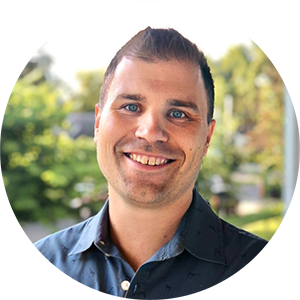Your Interventions Are Too Clinical

Direct, clinical interventions often fail. Instead, focus on building relationships first and you’ll earn the opportunity to offer people tools to make healthy decisions.
Early in my career, I joined a team inside a large health insurance company that was identifying and closing gaps in their members’ care: annual wellness visits, HbA1c measures, health risk assessments, sign-ups for the latest care management solution, etc. The teams I led had smart, well-meaning people, and yet engagement rates were not what we wished they were. Sure, there were some very engaged members here and there, but something about the program wasn’t working.
What was going wrong? We knew that if we identified and closed out-of-range HbA1c’s, the population would be healthier (on average) and the total cost of care would drop (on average). The problem was that knowing how to alter health outcomes was only half of the problem. The other half was understanding what goes into an individual’s health in the first place.
Meet Zeke
During one observational visit, I listened in on a nurse’s call with a member we’ll call Zeke. From the claims data, the nurse knew that Zeke had spent 17 days hospitalized in the last six months from hypoglycemia and complications due to unmanaged type 2 diabetes. The data said: If Zeke takes his insulin correctly, he’ll be healthier and cost less. Simple. We needed an intervention that educated him on how and when to take insulin, how to measure his blood sugar levels, and ensured that he was seeing an endocrinologist regularly.
Luckily Zeke answered his phone when our nurse care manager called (this is often the biggest struggle), and he happened to be talking to one of our best care managers. She was knowledgeable enough to ask what was preventing him from managing his condition.
Zeke wasn’t rude, but he wasn’t interested in being on the phone. He said something vague about “having to stay up with things better” and “life getting in the way sometimes” and said that he’s doing his best day-to-day. We were able to confirm his phone number and primary care provider and that he had a follow up appointment scheduled. When the call ended, we weren’t sure if it was a success or a failure? How should our data models adjust to better intervene? We didn’t know.
Really Meet Zeke
We reached out to Zeke to learn more. As we sat in the place Zeke called home that month, we discussed his life history and how he got to where he was that day. We learned that his life was chaotic. He had friends that he loved and he had his dog, but he also had traumas. He struggled to stay consistently employed, and he was transient — not quite homeless but he moved around a lot. He felt like he was always one step away from stability and one step away from chaos. That chaos kept him from managing his diabetes effectively.
Traumas like Zeke’s, chaotic lives like Zeke’s, lead to long-term effects on executive function. Zeke is living moment-to-moment and day-to-day. Thinking about the long-term and making a plan are not straight-forward things that can be covered in a call with a stranger. Zeke’s uncontrolled diabetes is just one symptom leading him to the hospital every month where he’d get things under control and be released. Then the costly cycle repeated itself.
He needed someone to listen and understand his situation through his lens. he needed someone he could trust.”
The payor saw Zeke’s inpatient admits and tried the shortest way to eliminate them. But the data and the clinical approach ignored the story we uncovered. Zeke wasn’t failing to take his insulin; he couldn’t take it. No phone call about diabetes was going to help him. In fact, the shame from the interaction probably made things worse. Certainly this wasn’t the first time a healthcare institution made him feel that way. It also wasn’t the first time an institution failed to recognize that his clinical problems weren’t going to be solved with a clinical intervention.
After all, we all know that we should be eating better, getting more exercise, meditating, spending more time with family or friends, on and on. Just like Zeke probably knew he should be doing things that are healthier. For him, it was more complicated than making a plan to take his insulin. He needed someone to listen and understand his situation through his lens. He needed someone he could trust.
Five Ingredients for Successful Non-Clinical Interventions
- Interventions must earn a seat at the table:
Before offering individuals tools to improve their lives, you must first earn the right to do so. - Earning a seat at the table requires trust:
Most people want to know, trust, and respect the person before accepting (and following) any health advice. Most people will resist requests from faceless people telling them to change. - Trust is built on authentic relationships:
If Zeke is going to share vulnerable parts of his life, he is more likely to do so with someone with whom he has already established a relationship. - Relationships begin with shared identities:
People will trust, respect, and listen to people with whom they share something in common: language, culture, race. - Clinical expertise is never a shared identity:
Experts, technical language, and appeals to authority are often barriers to trust because they indicate a lack of common ground.
How to Do It Right
- Focus on the relationship first (it’s ok if the conversation feels more roundabout)
- Spend more time listening than talking — people want to be heard and understood
- Ensure members can identify with the person who initiates the conversation
- Prioritize the member’s needs, not your own goals
In one use case with the highest needs members in a state, this approach resulted in an 85% monthly engagement rate and 94% gap closures — with very few of those closures happening in the first conversation. No one in this program churned in the first three months of their engagement and 54% were still engaged 12 months later.
No one in this program churned in the first three months of their engagement and 54% were still engaged 12 months later.”
None of this happened by addressing gap closure head on, and it may feel roundabout. But if you are intentional about with whom you intervene — people you know will be expensive in the future — and you intervene in a way that addresses their immediate concerns, as they define them, the clinical stuff will come up.
When it does, you will have established a relationship that allows your clinical advice to be trusted. And perhaps more importantly, that advice may be achievable because you’ll have been able to address the root causes of the issue. If you establish a relationship with Zeke, earn his trust, and learn about his challenges, then perhaps you’ll have earned the right to offer him the tools to help him stabilize his life and his health.



